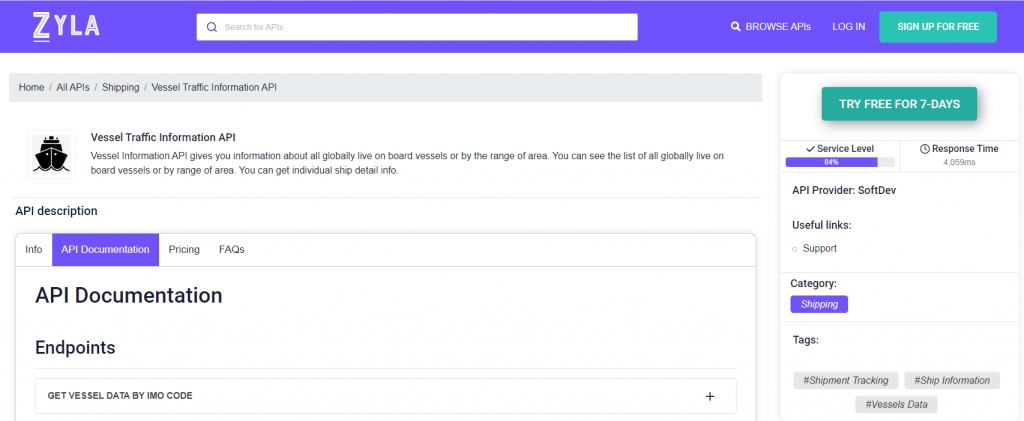If you want to get a hold of an API that can make your work easier, we have a solid option below.
The maritime industry, which serves as a lifeline for global trade, has come a long way with technological advancements in recent years. One such advancement that has revolutionized the industry is the use of Application Programming Interfaces (APIs) for tracking ships. Vessel finder APIs have provided unprecedented access to real-time data on ship locations, routes, and other relevant information, making it easier for businesses to optimize maritime routes and improve operational efficiency.
In the maritime industry, vessel finder APIs provide a wealth of benefits for businesses involved in shipping, logistics, and supply chain management.
One of the key benefits of using an API for tracking ships is real-time visibility. With a vessel finder API, businesses can access up-to-date information on the exact location of ships, their routes, and estimated arrival times. This real-time data enables businesses to make informed decisions and optimize maritime routes accordingly. For example, if a ship is running behind schedule, businesses can re-route it to avoid delays and reduce costs associated with demurrage, detention, or other penalties.

With over a hundred thousand ships sailing the seven seas at any given time, keeping track of every single one is a daunting task. If you work in the maritime industry, with its level of competition, finding the right tool for the job is of extreme importance. That is why we recommend Zyla’s Vessel Traffic Information API, the right tool to keep an eye on any civilian ship, anywhere on the high seas.
How To Use This API?
Vessel Tracking Information API is a very flexible tool, and it’s easy to integrate into any app or website you might be working on. It has three main functions, which result in different types of output, which can in turn be used to satisfy different needs:
- GET VESSEL DATA BY IMO CODE: with this mode, you need a ship’s IMO code as input, and as output you’ll get information on the ship in question, such as its location, and general information about it, as its length, it’s maxed draught, the year it was launched, and more.
- GET CURRENT ROUTE BY IMO CODE: with this function, which also requires an IMO code, you’ll get information like the departure port and destination of a particular ship.
- GET POSITION: this function asks for a particular set of coordinates, that is, latitude and longitude, and as output, you’ll get a list of all the ships that happen to be in that area.
To give an example of how this API works, here’s the output for the second option, if one would want to check the current route of the supertanker FSO ASIA (pictured above), one needs only to provide the ship’s IMO number as input…
{
"status": 200,
"success": true,
"message": "IMO Code 9224752 is valid",
"data": {
"departure_port": "",
"departure_atd": "",
"callsign": "V7QR6",
"flag": "Marshall Islands",
"length_beam": "380 / 68 m",
"imo_mmsi": "9224752 / 538003426",
"navigation_status": "Moored",
"current_draught": "21.0 m",
"course_speed": " ",
"arrival_port": "AL SHAHEEN SPM 2",
"arrival_atd": "ETA: Jul 12, 13:30",
"latest_port_calls": []
}
}…And the API will gladly tell us that the gigantic ship is currently moored, but that she’s scheduled to arrive at Qatar’s port by July 12. This also tells us that the route in itself hasn’t been planned yet. Vessel Traffic Information API’s true power stems from its unparalleled accuracy and ease of use. It is simple for companies to incorporate ship tracking functionality into their existing systems, and as it’s clear, it’s a very intuitive tool, which you can try out following these simple steps:

1- Go to Vessel Traffic Information API and simply click on the button “Try Free For 7-Days” to start using the API.
2- Employ the different API endpoints depending on what you are looking for.
3- Once you meet your needed endpoint, make the API call by pressing the button “run” and see the results on your screen.

